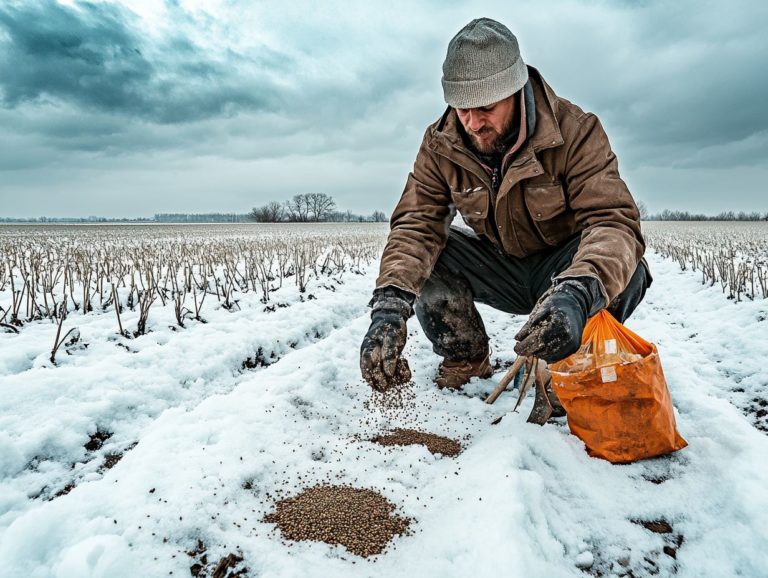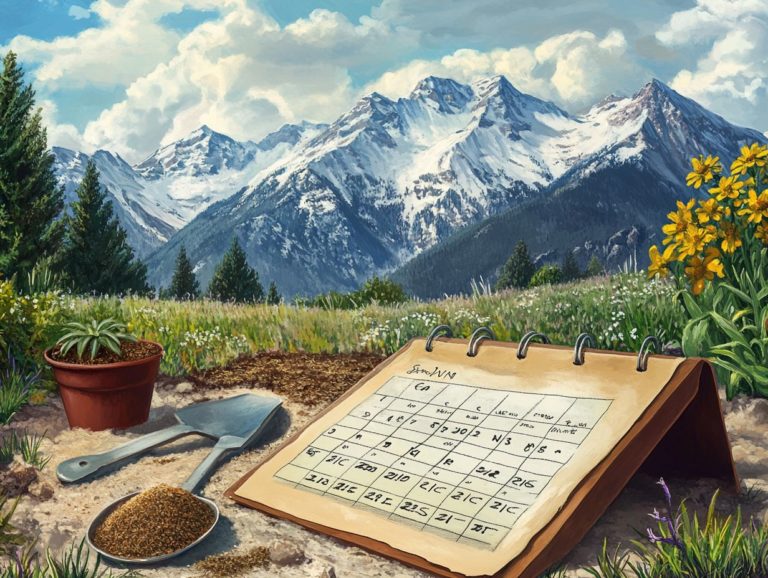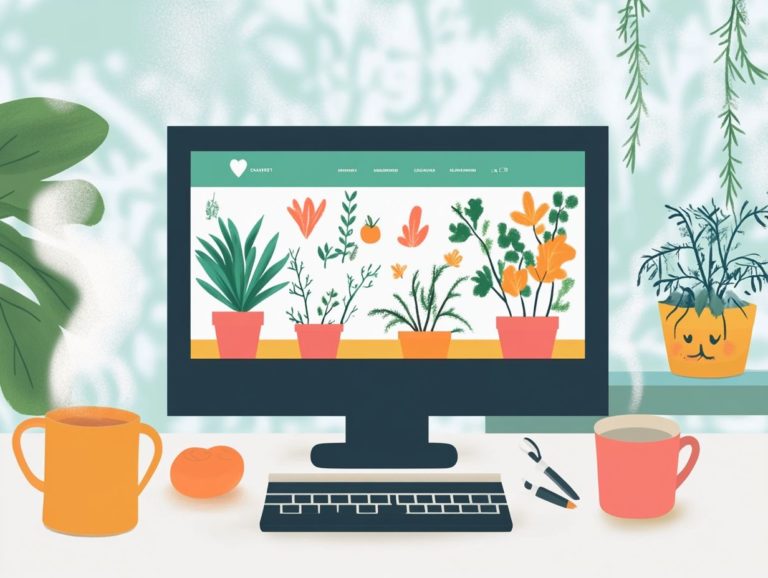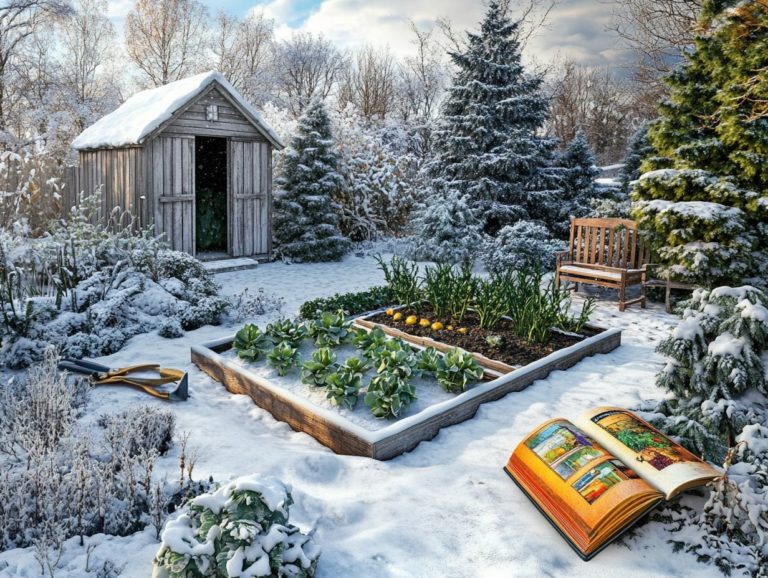What are the Challenges of Cold-Climate Gardening?
Gardening in cold climates offers its own set of challenges, yet with the right strategies, it can be immensely rewarding. Ready to unlock the secrets of winter gardening?
This guide delves into the essentials of cold-climate gardening. It focuses on understanding temperature and light requirements while selecting frost-resistant plants.
You ll uncover effective methods to safeguard your garden from the chill, tackle common pest and disease issues, and discover tips for thriving despite the cold. Whether you’re a seasoned gardener or just beginning your journey, you’ll find valuable insights to help you cultivate a vibrant garden throughout the year.
Contents
- Key Takeaways:
- The Basics of Cold-Climate Gardening
- Climate Considerations for Cold-Climate Gardening
- Choosing the Right Plants for Cold-Climate Gardening
- Protecting Your Garden from the Cold
- Dealing with Pests and Diseases in Cold Climates
- Tips for Successful Cold-Climate Gardening
- Frequently Asked Questions
- What are the Challenges of Cold-Climate Gardening?
- What Makes Cold-Climate Gardening Difficult?
- How Does the Short Growing Season Affect Cold-Climate Gardening?
- What Strategies Can Help with Extreme Temperature Variations in Cold-Climate Gardening?
- Why is soil quality a challenge in cold-climate gardening?
- What are some of the best plants to grow in cold-climate gardens?
- What are some resources for learning about cold-climate gardening?
Key Takeaways:
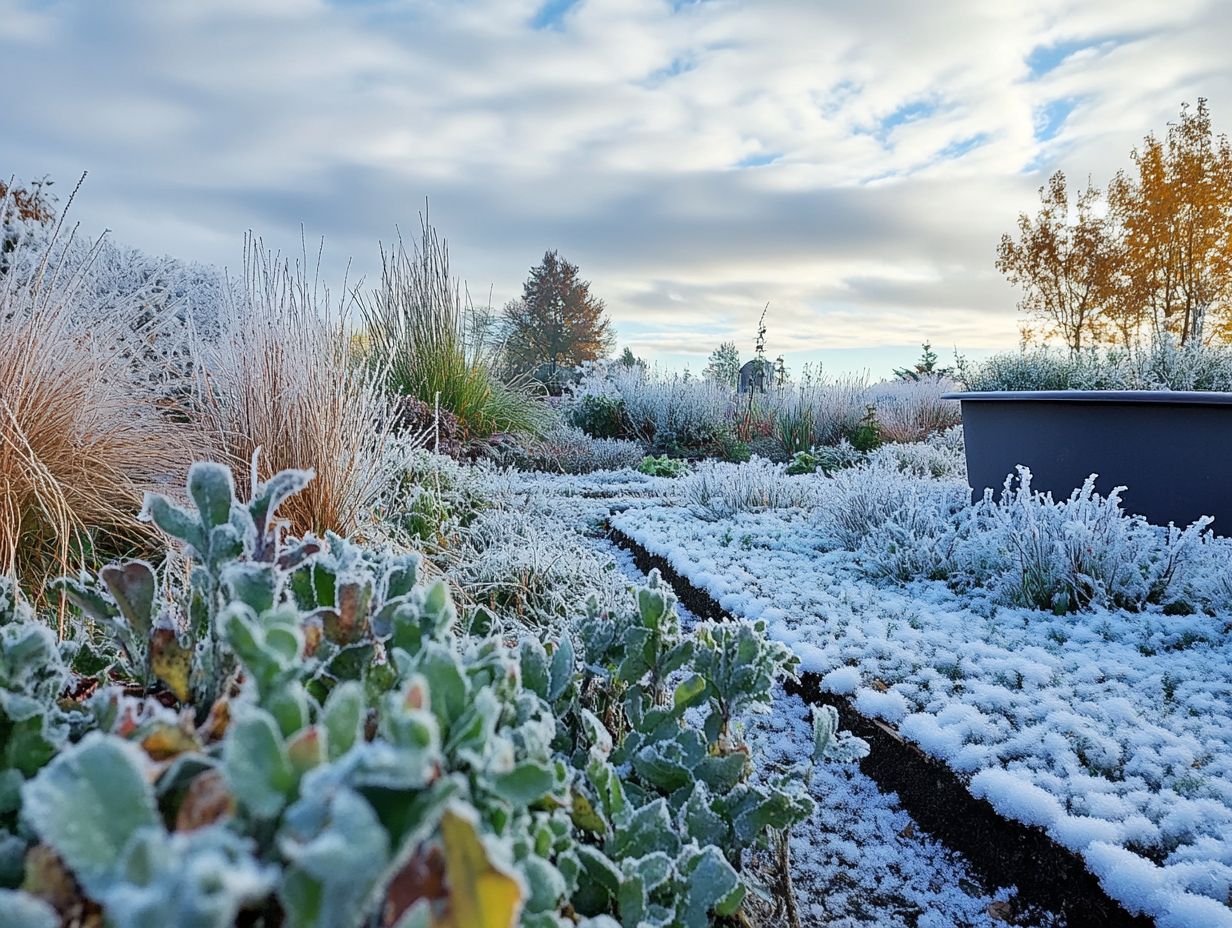
- Cold-climate gardening requires understanding and overcoming unique challenges such as harsh temperatures, limited sunlight, and poor soil conditions.
- Choosing the right plants is crucial for success, with cold-resistant varieties being the best options.
- To protect your garden from the cold, methods such as using cold frames, mulching, and selecting frost-resistant plants can help extend the growing season.
The Basics of Cold-Climate Gardening
Cold-climate gardening, especially in places like Wyoming, offers distinct challenges and remarkable opportunities for those passionate about cultivating their green thumbs. To navigate these hurdles effectively, it’s important to explore winter gardening challenges and how to overcome them. Understanding the basics of this unique gardening style enables you to grow a variety of vegetables and herbs, even in harsh weather.
Key elements like timing your plantings, managing first and last frost dates, and using raised beds enhance your chances of success.
You can tackle soil challenges by using effective strategies, which opens the door to productive indoor gardening. Utilizing season extenders helps maximize your harvest and make the most of every growing opportunity.
Understanding the Challenges
Gardening in a cold climate presents unique challenges, such as managing the timing of the first and last frost, ensuring soil quality, and being aware of common mistakes in cold-climate gardening while designing raised beds for optimal plant growth.
These hurdles can significantly influence your ability to cultivate a thriving garden. You often need to navigate short growing seasons that limit the types of plants you can grow, along with harsh weather conditions that threaten frost damage. Additionally, it’s important to be aware of common pests in cold-climate gardening that can impact your plants.
A highly effective solution is to implement raised beds, which enhance drainage and warmth, allowing for earlier planting. To optimize results, focus on getting your soil ready by adding organic matter like compost or well-rotted manure. This enriches the nutrient content and improves soil structure, promoting strong plant growth even in cooler climates.
Climate Considerations for Cold-Climate Gardening
When you delve into cold-climate gardening, especially in Wyoming, consider factors like temperature, light exposure, and soil requirements. Understanding the environmental benefits of cold gardening can also be critical for your garden’s success.
By grasping these fundamentals, you can make informed choices about what to plant and when. This will maximize your harvest potential! Aligning your gardening techniques with local climate conditions ensures that your vegetables and herbs flourish, even amid the challenges posed by colder temperatures.
Temperature, Light, and Soil Requirements
Temperature and light are essential for the growth of vegetables and herbs in cold climates, directly impacting plant development and the amount of food you can grow.
Understanding the ideal temperature ranges and light conditions for each crop type is vital for maximizing your productivity. For example, certain leafy greens and root vegetables thrive at temperatures between 50 F and 75 F, while herbs prefer slightly warmer conditions. Ensuring these plants receive adequate sunlight typically around six hours per day will stimulate their growth.
Proper soil requirements are equally crucial, as good drainage and nutrient-rich content foster healthy root systems. When you harmonize these factors, you significantly enhance the resilience of your cold-weather crops, equipping them to withstand frost and other challenges associated with lower temperatures.
Choosing the Right Plants for Cold-Climate Gardening
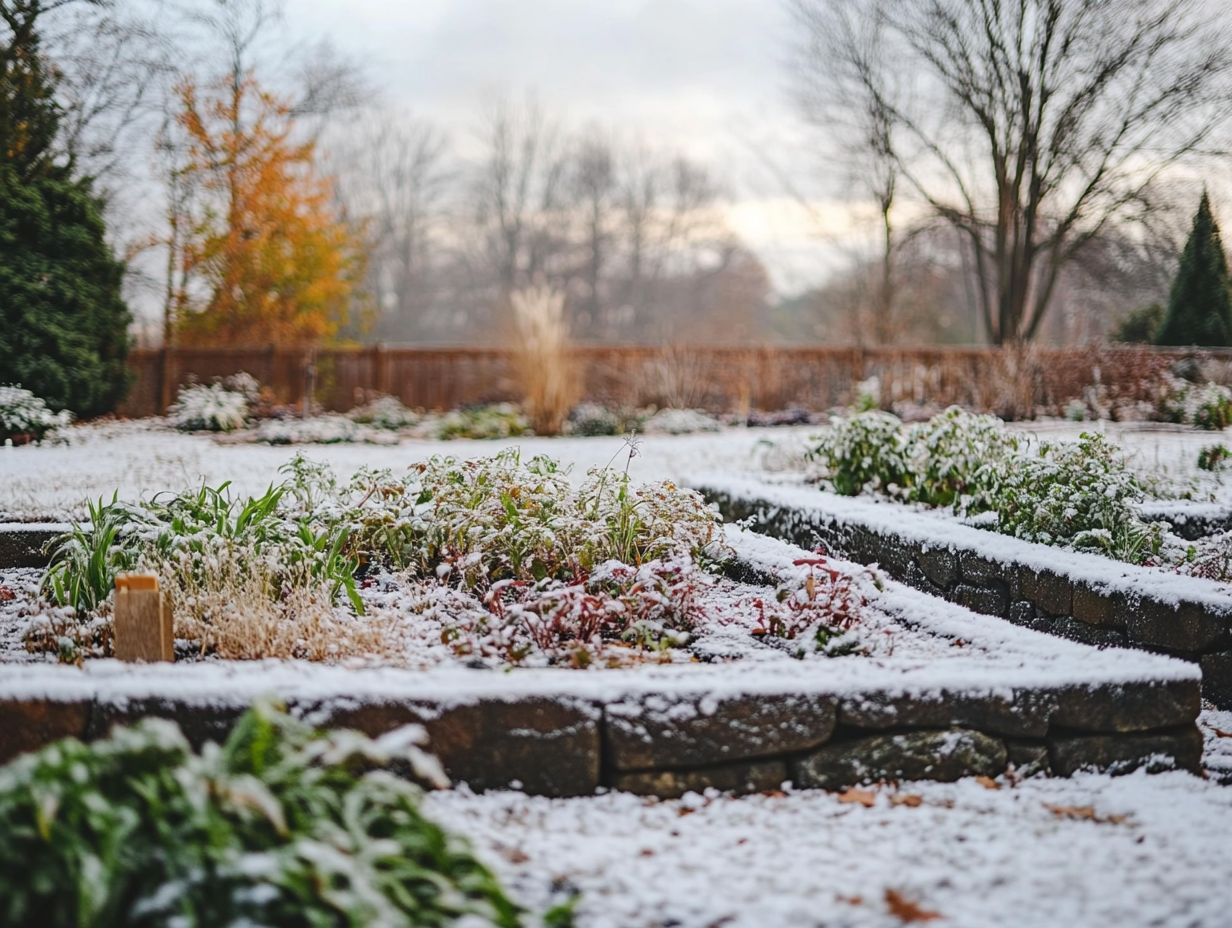
Selecting the right plants is essential for your success in cold-climate gardening. In Wyoming’s distinct conditions, certain cold-weather crops will thrive, leading to a rewarding planting experience.
Heirloom seeds, in particular, provide a stunning array of crop varieties, such as:
- Tomatoes
- Peppers
- Beets
- Cabbage
- Celery
- Carrots
- Spinach
These can flourish even in the face of early frosts and shorter growing seasons. By choosing your plants thoughtfully, you not only set the stage for a bountiful harvest, but also enrich the local gardening landscape with vibrant biodiversity.
Cold-Weather Crops and Plant Varieties
Cold-weather crops are your best bet for shorter growing seasons, often featuring varieties like tomatoes, peppers, and various herbs that can flourish in cooler climates.
In Wyoming’s unique climate, you’ll find that other cold-hardy options such as kale, spinach, and carrots really excel. These crops not only thrive in lower temperatures but also show resilience against frost, making them perfect for planting in early spring and fall.
For the best results, they prefer well-drained soil and full sunlight. However, some, like kale, can manage with partial shade. Start seeds indoors about four to six weeks before the last frost date this gives them a valuable head start.
Don t forget about season extenders like row covers; they can safeguard your delicate seedlings from unexpected temperature drops, ensuring they continue to thrive even when conditions are unpredictable.
Protecting Your Garden from the Cold
Keep your garden thriving through winter it’s crucial for your plants’ health! Protecting your garden from the cold is vital for maintaining plant health and productivity, especially in harsh climates like Wyoming, where winter can be particularly relentless.
Embrace several effective methods, such as cold frames, greenhouses, and hoop houses, which are invaluable for extending the season and significantly improving growth conditions for your crops. These protective structures guard your plants against frost while helping to maintain optimal temperature and humidity levels.
This commitment contributes to an extended growing season and ultimately leads to a more bountiful harvest.
Methods for Extending the Growing Season
To extend your growing season in colder climates, employ effective methods like cold frames, greenhouses, and hoop houses. These structures create a warm environment for plants to thrive.
They shield your plants from frost and harsh weather while helping regulate temperature and humidity, spurring faster growth and possibly allowing for earlier harvests.
If you’re considering building one yourself, you ll find affordable plans available online, or you can choose from a variety of pre-made kits tailored to different garden sizes.
When using these season extenders, it’s essential to monitor the internal environment. Ensure adequate ventilation and keep temperatures from climbing too high to make all the difference.
By carefully timing your approach, you can maximize productivity and enjoy a more rewarding gardening experience during those challenging months.
Dealing with Pests and Diseases in Cold Climates
Managing pests and diseases in cold climates presents its own challenges, but understanding why choose cold-climate gardening and their solutions is essential for maintaining a flourishing garden.
While colder temperatures may diminish the prevalence of certain pests, others can still thrive. It’s crucial to adopt effective control strategies. By identifying the symptoms of common diseases and implementing preventative measures, you can protect your vegetables and herbs from potential threats, ultimately ensuring a bountiful harvest.
Take charge of your garden now and keep it healthy!
Common Issues and Solutions
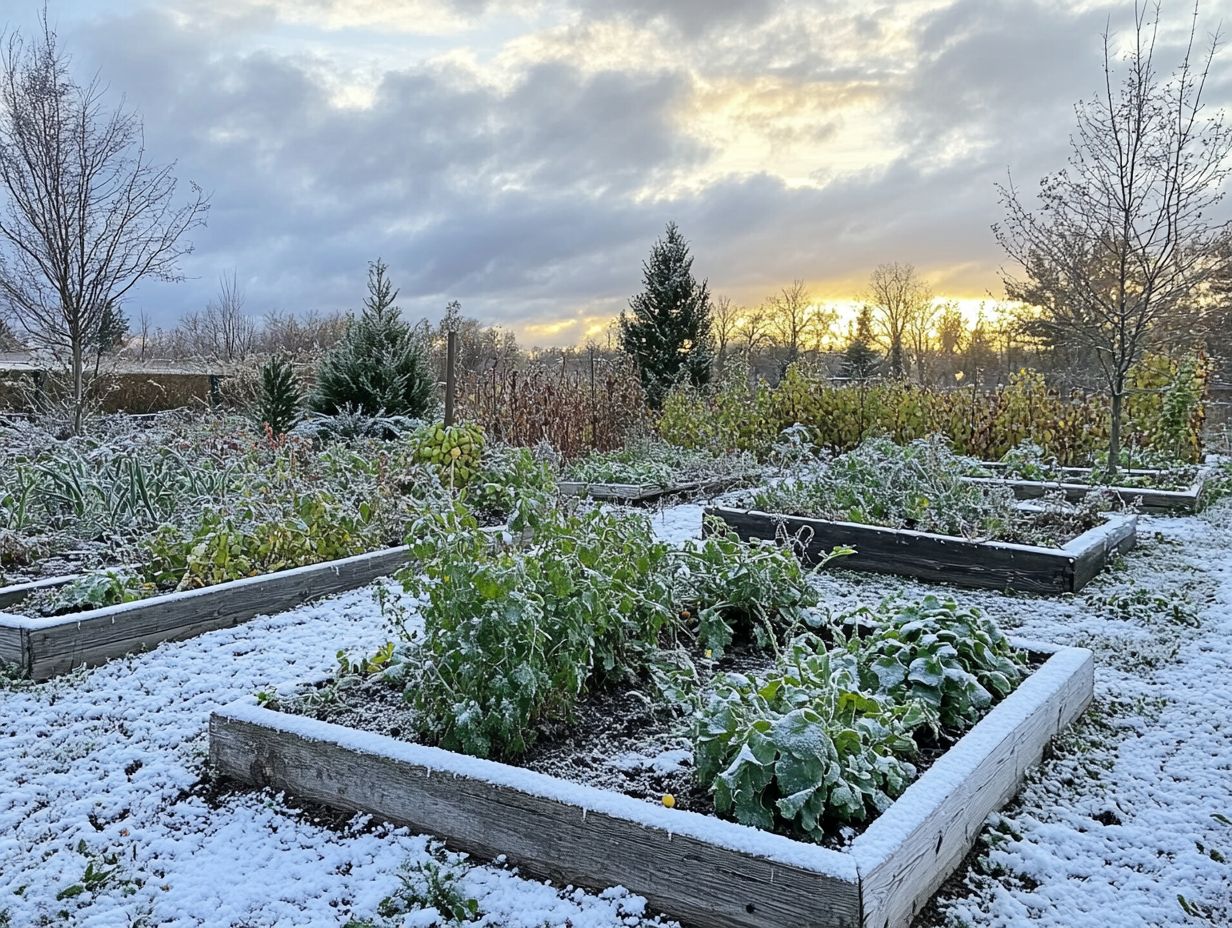
In cold climates, you may face challenges. Pests and diseases can jeopardize the health of your plants. However, spotting these issues early allows you to implement effective solutions.
Among the usual suspects are aphids, caterpillars, and fungal infections. These tend to flourish in fluctuating temperatures and can wreak havoc on your crops if left unaddressed. To tackle these pests, it’s essential to employ a blend of organic techniques like introducing beneficial insects such as ladybugs or applying neem oil. Be ready to use targeted chemical treatments when necessary.
Maintaining proper plant hygiene can significantly lower the risk of infestations. Swiftly clear away debris and practice crop rotation changing the plants grown in an area each season to keep soil healthy. You might also want to consider using row covers to create a microclimate. This not only shields your plants from pests but also helps regulate temperature fluctuations, promoting healthier growth during the chilly months.
Tips for Successful Cold-Climate Gardening
If you want to succeed at cold-climate gardening, you need careful planning and action. Embrace the unique environmental conditions of Wyoming. Act now by considering suitable crop varieties, effective planting techniques, and the advantages of indoor gardening methods. This can greatly increase your chances of a fruitful harvest.
Integrating these customized strategies fosters the health of your plants. It also champions sustainable gardening practices that can flourish even in the harshest climates.
Expert Advice and Best Practices
Expert advice and best practices are invaluable resources for anyone seeking to thrive in cold-climate gardening. They offer proven techniques designed for your local conditions.
By tapping into the wisdom of seasoned gardeners and horticulturists in your area, you can uncover insights into which plant varieties will flourish even in the chill. These experts often recommend strategies like using raised beds to enhance drainage and retain warmth. You might also consider applying winter mulching to safeguard sensitive roots.
Community workshops and local gardening clubs are excellent opportunities for sharing knowledge and resources. Learn from the successes and failures of fellow gardeners. Engaging with nearby nurseries gives you access to hardy plants and seeds that are perfectly suited for harsh winters. This ensures your garden remains resilient and productive.
Frequently Asked Questions
What are the Challenges of Cold-Climate Gardening?
Cold-climate gardening refers to growing plants in regions with long, harsh winters and short, cool summers. While it may seem daunting, there are several challenges that come with gardening in these conditions. To better understand these challenges, explore the key principles of cold-climate gardening through some frequently asked questions.
What Makes Cold-Climate Gardening Difficult?
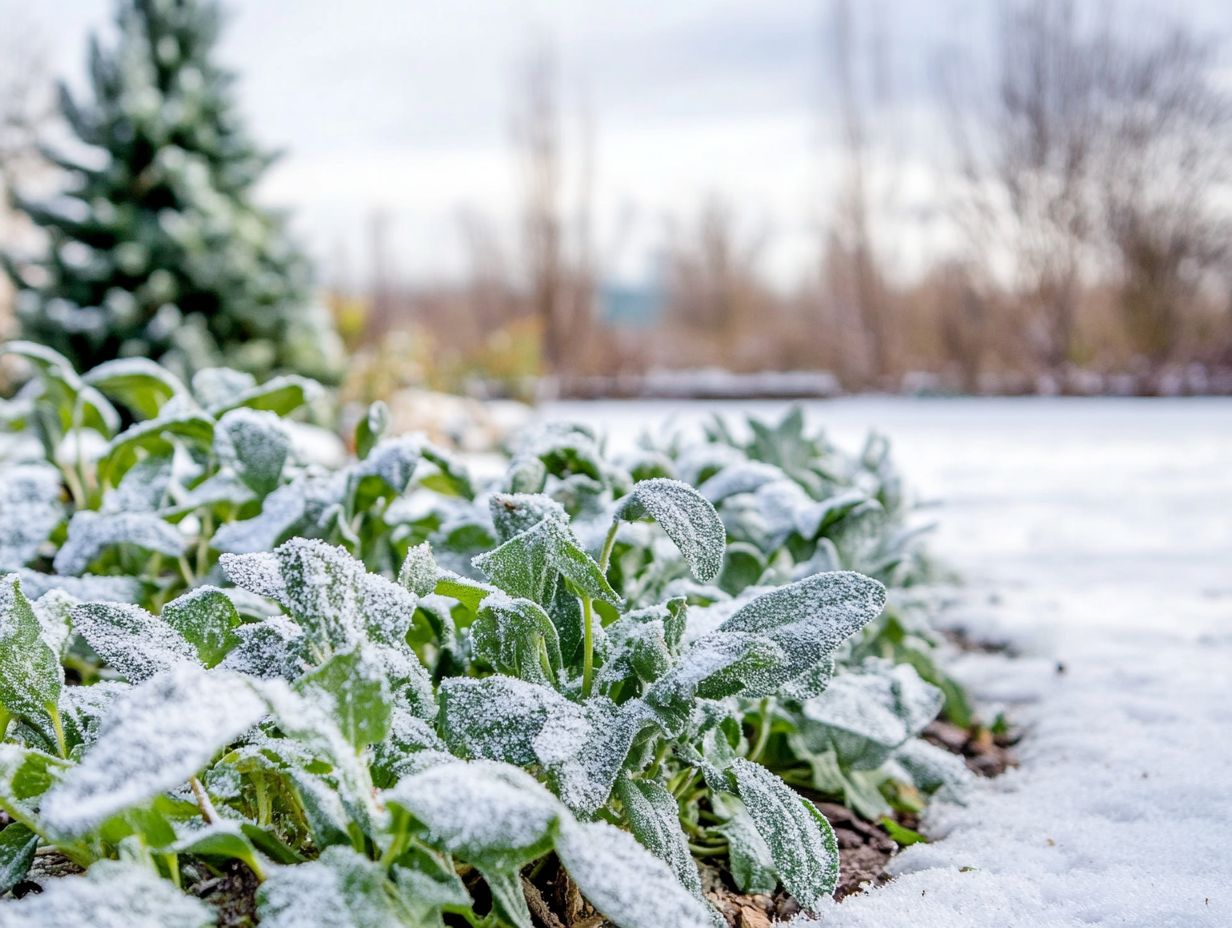
The main factors that make cold-climate gardening challenging are the short growing season, extreme temperature variations, and poor soil quality. These factors can make it difficult for plants to thrive and require gardeners to take extra precautions.
How Does the Short Growing Season Affect Cold-Climate Gardening?
In cold climates, the growing season is much shorter than in warmer regions. This means that plants have a limited time to grow and produce before the frost and snow arrive. It can be challenging for gardeners who want to grow certain types of plants that require a longer growing season.
What Strategies Can Help with Extreme Temperature Variations in Cold-Climate Gardening?
Cold-climate areas can experience extreme temperature variations, with hot summers and freezing winters. This can be tough on plants, so gardeners often use techniques like mulching, covering plants, or building greenhouses to protect them from extreme temperature changes. Additionally, utilizing essential gardening apps for cold climates can help optimize these efforts.
Why is soil quality a challenge in cold-climate gardening?
Cold climates often have poor soil quality. The soil typically has a high clay content and low organic matter.
This makes it tough for plants to grow and thrive. Gardeners need to improve the soil with compost or other nutrients.
What are some of the best plants to grow in cold-climate gardens?
Despite the challenges, many plants can thrive in cold climates. Cold-tolerant vegetables like carrots, beets, and kale are great options.
Hardy perennials such as coneflowers and peonies also do well.
What are some resources for learning about cold-climate gardening?
Many resources can help you learn about cold-climate gardening. Check out local gardening clubs, visit nearby gardening stores, or explore online forums and articles from experienced gardeners.
Exciting resources await you to boost your cold-climate gardening skills!

